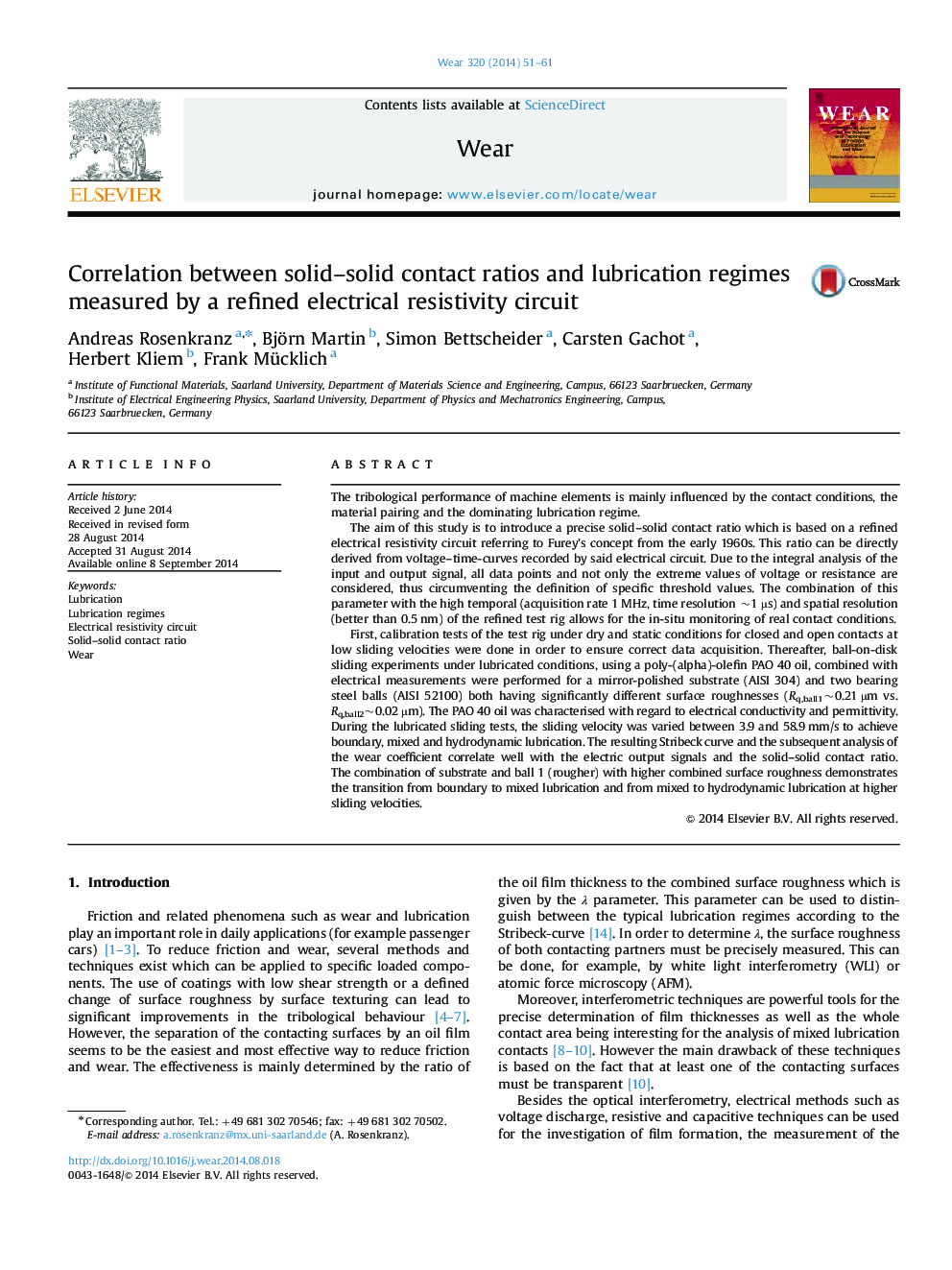| کد مقاله | کد نشریه | سال انتشار | مقاله انگلیسی | نسخه تمام متن |
|---|---|---|---|---|
| 617165 | 1454982 | 2014 | 11 صفحه PDF | دانلود رایگان |
• An advanced electrical resistivity setup was successfully established.
• Lubricated tests were done for two steel balls with a differing surface roughness.
• The solid–solid contact ratios were determined for the different sliding pairs.
The tribological performance of machine elements is mainly influenced by the contact conditions, the material pairing and the dominating lubrication regime.The aim of this study is to introduce a precise solid–solid contact ratio which is based on a refined electrical resistivity circuit referring to Furey’s concept from the early 1960s. This ratio can be directly derived from voltage–time-curves recorded by said electrical circuit. Due to the integral analysis of the input and output signal, all data points and not only the extreme values of voltage or resistance are considered, thus circumventing the definition of specific threshold values. The combination of this parameter with the high temporal (acquisition rate 1 MHz, time resolution ~1 µs) and spatial resolution (better than 0.5 nm) of the refined test rig allows for the in-situ monitoring of real contact conditions.First, calibration tests of the test rig under dry and static conditions for closed and open contacts at low sliding velocities were done in order to ensure correct data acquisition. Thereafter, ball-on-disk sliding experiments under lubricated conditions, using a poly-(alpha)-olefin PAO 40 oil, combined with electrical measurements were performed for a mirror-polished substrate (AISI 304) and two bearing steel balls (AISI 52100) both having significantly different surface roughnesses (Rq,ball1~0.21 µm vs. Rq,ball2~0.02 µm). The PAO 40 oil was characterised with regard to electrical conductivity and permittivity. During the lubricated sliding tests, the sliding velocity was varied between 3.9 and 58.9 mm/s to achieve boundary, mixed and hydrodynamic lubrication. The resulting Stribeck curve and the subsequent analysis of the wear coefficient correlate well with the electric output signals and the solid–solid contact ratio. The combination of substrate and ball 1 (rougher) with higher combined surface roughness demonstrates the transition from boundary to mixed lubrication and from mixed to hydrodynamic lubrication at higher sliding velocities.
Journal: Wear - Volume 320, 15 December 2014, Pages 51–61
